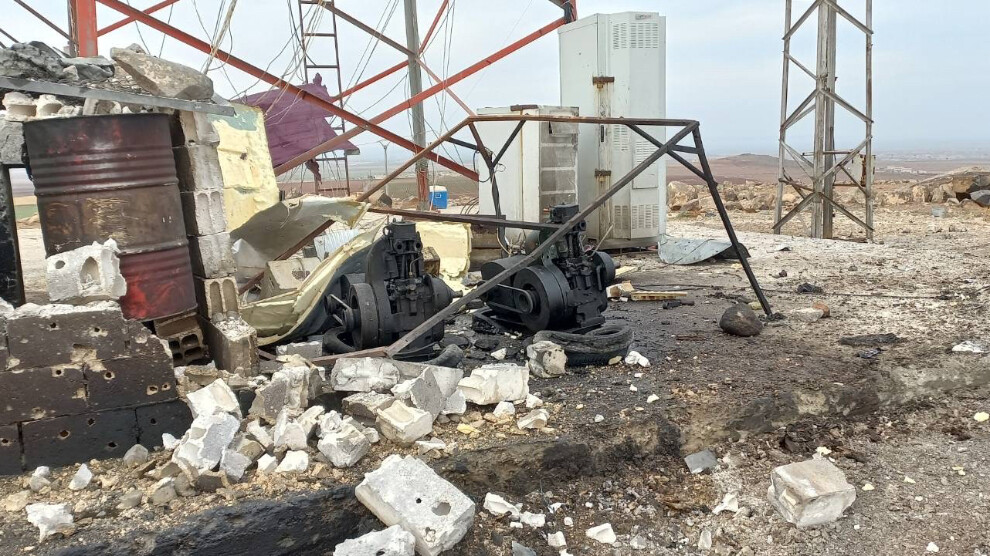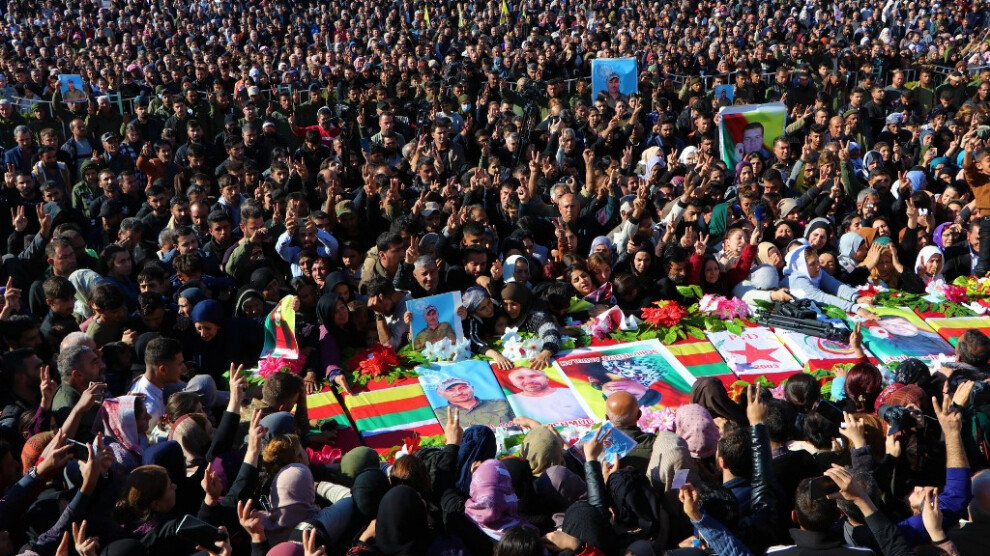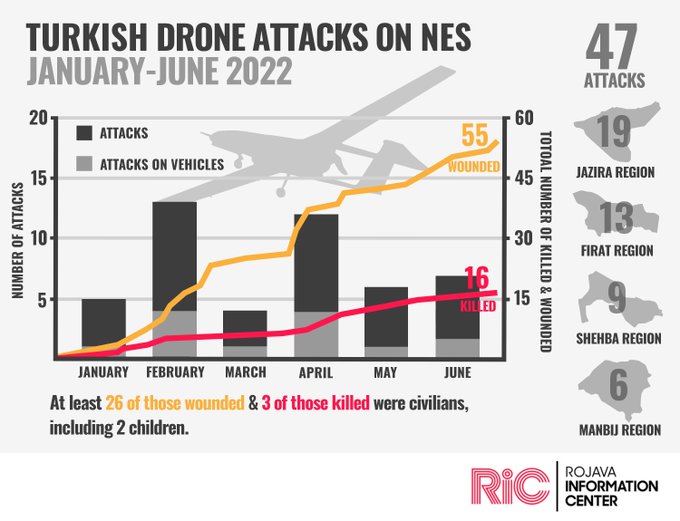Matt Broomfield
Turkey’s latest wave of deadly airstrikes against Kurdish-led North and East Syria (NES) have resulted in more than two dozen casualties, hitting civilian targets including a power station, a grain silo and a coronavirus hospital along with military bases belonging to the US-allied Syrian Democratic Forces and the Syrian Arab Army.

The Rojava Information Centre, an on-the-ground news source which provides foreign press with information, contacts and resources to enable them to cover the situation in NES, describes the ongoing attacks as a ‘drone war’ and the most significant escalation in the region since a crisis which began in February 2022 with a comparable wave of deadly airstrikes and the threat of a ground invasion.
Medya News spoke to Samantha Teal from the Rojava Information Centre, who shared her observations following a visit to the site of one of the airstrikes, and her conversations with multiple civilian victims injured during a ‘double tap’ strike on the village of Teqil Beqil near Derik in the extreme east of NES.
Can you give an overview of the recent attacks? How do they differ from ongoing drone strikes against NES?
The region is constantly under aerial attack. But from the night of 19 November until now, there has been a really intense aerial bombardment across North and East Syria, all the way from Shehba in the West to Derik in the east with both warplanes and drone strikes as well as intermittent shelling in villages close to the border with Turkey or Turkish-occupied areas.

You recently visited the site of one ‘double tap’ air strike. Can you tell us about it?
There were several civilian targets that were hit, starting from Derik in the east where a power station in the village of Teqil Beqil was hit. Today, myself and several other people from the RIC went to Teqil Beqil to talk to people who had witnessed this strike.
[After the initial strike, people] assumed there would be killed and injured and they wanted to help. They said, when they arrived, that many people had come from all over the surrounding villages. It was very dark, they couldn’t see anything, but there were body parts everywhere and people who had been burned from the explosion… At around 3am warplanes conducted more strikes, and this time they said it was very chaotic because many people had congregated and there were warplanes circling the sky… People were trying to find their friends and loved ones, but there were body parts around completely blown beyond recognition.
It was what we call a ‘double tap’ strike. The first strike occurred, and time was given, and people congregated to help the injured and recover the bodies of the killed… 12,58 At 3am, around two hours after the first strikes, there were more strikes, and that was when most people were killed.

What is the impact of Turkey’s drone war on the civilian population of NES?
In terms of the impact on local people of these drone strikes, the situation of near-constant threat in their daily life and the insecurity that these aerial attacks impose on civilian life, all the people we spoke to were naming their friends, their family, as those who had been killed, people they knew, people they loved and cared for. And despite the fact that drone strikes are not a new thing in NES, and are almost semi-regular, when this round of bombing occurred people were not unwilling or afraid of immediately going to help the injured, despite knowing there is a near-constant threat of attacks.
Turkey claims its drone strikes are ‘surgical’ and only target military objectives. Is this accurate?
Turkey uses this to sell the strikes to the wider world and specifically the US and Russia, who control the airspace in North and East Syria and thus have to greenlight any aerial attack. By using the narrative that drone strikes are precise and targeted is how Turkey is trying to get around the fact that the US and Russia have, up until now, refused permission for a full ground invasion of NES, which Turkey announced plans for back in May. It therefore seems the US and Russia have accepted that Turkey can conduct limited aerial assaults, which are still really damaging.
If we look over the whole year, we see there have been 89 drone strikes, not even including these past four days. Turkey is selling the narrative that these are precise, targeted strikes but if we look at who has been killed, it’s a lot of civilians, 23 killed and 61 injured. If we evaluate Turkey’s drone war of ‘targeted strikes’, we can see that figures are being targeted based on their perceived importance within the democratic [system] here.
Matt Broomfield is a freelance journalist, poet and activist. He writes for VICE, Medya News, the New Statesman and the New Arab; his prose has been published by The Mays, Anti-Heroin Chic and Plenitude; and his poetry by the National Poetry Society, the Independent, and Bare Fiction. His work was displayed across London by Poetry on the Underground, and he is a Foyle Young Poet of the Year.









